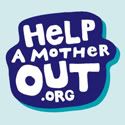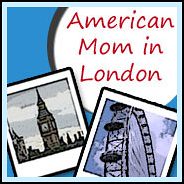If you had asked me a week ago if I plan to get my first grader a mobile phone this Christmas, I would have laughed. In fact, I think I did when my tech-savvy six-year-old sheepishly tried to slip one on his Christmas wish lists. Following the tragic school shooting last Friday and far too many others leading up to it, I may be willing to reconsider my stance.
I’m not the only one.
Technology has dramatically changed the way schools and organizations handle emergency plans. Remember calling trees? Yeah, no one else does either. We don’t need them. Schools can instantly send alerts via social media, email, and/or text to all of the parents at the same time. Once 911 is dialed from a school, a reverse 911 call can be sent to families informing them of the incident. Parents can jump into action right away, but why not empower their kids to mobilize or call for help, as well? It’s worth considering.
Cell phone usage among elementary kids has been on the rise recently. Cell phones are already commonplace among tweens and teens. Middle school seems to be the clear cut-off point for first phone-dom. However, children just starting school are not far behind. A YouthBeat survey from earlier this year reported that 13% children between the ages 6 and 10 already have their own phones.
Another study showed that 20 percent of third-graders have their own mobile device. By fifth grade, this number climbs to 39 percent. Clearly, it’s not uncommon for elementary school students to have cell phones of their own. So perhaps it should be part of the wider dialogue on what can be done in an emergency.
Many schools allow middle school and high school students to carry cell phones with them in school, but have policies in place regarding their use. Ringers off during class, no texting or cheating, emergencies only, etc. As districts around the country reassess and update their security protocols over the coming weeks, I imagine the same allowances will be made for elementary students as well.
It make sense to support cell phones usage among kids as a safety measure. Children are savvy enough to use a smartphone before they can tie their shoes, which means they can be taught how to dial their parents for help or call 911 in an emergency. Likewise, parents can track their kids’ whereabouts with the GPS functionality and monitor who else they text or call.
Mobile carriers and app developers have wised up to this trend and have begun offering services such as such as Safely Family Locator (available through AT&T, Sprint, and T-Mobile) and Drive Safe (available through Sprint). Of course, there’s also Safely Go (free in the Google Play Store), which limits distractions when you should be focused driving, studying, or spending time with your family.
The same YouthBeat study cited above also revealed that 35% of kids 6-10 years old with phones were able to access apps and 46% had full web access. This is worrisome, but not impossible to deal with…
My advice is to disable online access until safety, privacy, and rules are set in place, or until you feel your kids are responsible enough to handle being online on their own. Even then, you can closely monitor their online activity, set time and access limits, and see who they are calling/texting with Safely Phone Controls (available through Sprint).
Other helpful resources for setting boundaries and guidelines for technology are AT&T Mobile Safety, which features age-appropriate tips, and Common Sense Media which has advice sections on all things digital specific to educators and parents.
Disclosure: This post is sponsored by Location Labs, the makers of Safely apps for families and publishers of “Safely Times” a monthly newsletter offering tips and resources for parenting in a digital age”. I was compensated for this post. All of the thoughts and opinions are my own.

 Follow
Follow

























We just got my middle schooler her first cell phone. We had been trying to delay it for the longest time (most of her friends had them in elementary!). However, she has so many activities without us that I found myself constantly texting/calling her friends’ phones to reach her. Surprisingly, she is still getting used to the idea that she has a phone, has to pick it up when we call, and can use it to call us. I think though, in an emergency situation, she’d definitely use it. I can’t imagine my 2nd grader having a phone though. If she had a phone and I called it to check up on her, I think she’d be in and out talking to me and getting distracted by something she was doing!
I can see the reconsideration for many parents to have their child carry a cell phone at a younger age. I do feel assured however in the protective nature of teachers to their students. I am a teacher myself and know that teachers protect and guard the safety of their students as if they were their own children. There are so many checks and balances whenever there is any movement of your class in accounting for everyone.
On a different note, my district just started a Bring Your Own Device program where students are allowed to bring their cell phones, mobile devices, etc. Each school and teacher defines it a little differently (some allow the use of these freely during lunch, class, etc.), but the goal is for the students to bring them in to support instruction. I’m the instructional technology specialist for my school and have been incredible changes in the classroom because of it. Students are using apps during instruction/class activities, suggesting apps to the teachers, and utilizing their mobile devices for their own productivity in class. It’s been amazing!
and was erased, and on cleaned
then only a few have reached us
From many manuscripts of Antiquity
The most common form
From many manuscripts of Antiquity
handwritten books were made,
Since manuscripts are subject to deterioration
Europe, and in Ancient Russia
“Julia’s Garland” (fr. Guirlande de Julie)
handwritten books were made,
consists of the book itself
European glory, and even after
55 thousand Greek, 30 thousand Armenian